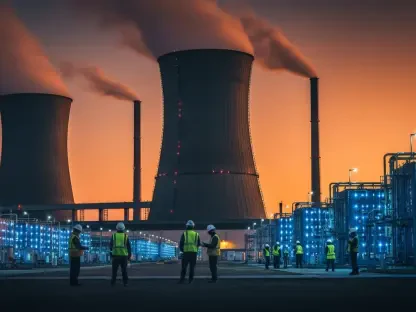As the global energy landscape shifts under the weight of geopolitical tensions and sanctions, few understand the intricacies better than Christopher Hailstone. With a storied career in energy management, renewable energy, and electricity delivery, Christopher is our go-to Utilities expert, offering unparalleled insights into grid reliability, security, and the broader implications of oil trading dynamics. Today, we delve into the recent developments surrounding Reliance Industries’ reported decision to halt purchases of Russian crude oil, exploring the ripple effects on India’s energy strategy, the financial implications for one of the country’s largest refiners, and the broader geopolitical context. Our conversation touches on the impact of U.S. sanctions, the search for alternative crude sources, and the evolving relationship between global powers in the energy market.
Can you walk us through the reasons behind Reliance Industries’ reported decision to stop buying Russian crude oil?
Certainly, Silvia. The primary driver here appears to be the recent U.S. sanctions on Russia’s largest oil companies, Rosneft and Lukoil. These measures, announced by the U.S. Treasury Department, are aimed at curbing Moscow’s financial capacity to sustain its military actions in Ukraine. For a company like Reliance, which has become a significant buyer of Russian crude, continuing these purchases under such sanctions poses substantial risks, including potential penalties or restricted access to international financial systems. It’s a pragmatic move to avoid legal and reputational fallout, even if it means disrupting a key supply chain.
How do these U.S. sanctions specifically influence Reliance’s decision-making process?
The sanctions create a direct threat to any company engaging in significant transactions with the targeted Russian entities. For Reliance, this means potential issues with payment mechanisms, as many international banks are wary of facilitating transactions that could violate U.S. regulations. There’s also the risk of secondary sanctions, which could impact Reliance’s ability to operate in other markets or secure financing. Beyond that, there’s diplomatic pressure—India’s relationship with the U.S. is critical, and aligning with these sanctions could be seen as a gesture of cooperation on the global stage.
How important has Russian crude become to Reliance’s operations in recent years?
Russian crude has grown into a cornerstone of Reliance’s supply chain. Data from commodities analytics shows that in September, Reliance was importing around 629,590 barrels per day from Russia, which is a massive chunk of India’s total imports of 1.6 million barrels daily. That’s over 50% of Reliance’s crude diet, a significant jump from just a year ago when they were importing around 428,000 barrels per day. This shift reflects a strategic pivot to capitalize on discounted Russian oil, especially as global energy prices fluctuated amidst geopolitical unrest.
What kind of financial hit might Reliance take if it completely halts these Russian crude purchases?
The financial impact could be notable, primarily on their profit margins. Russian crude has been attractive due to its discounted rates, often tied to long-term deals like the one Reliance signed with Rosneft. Analysts suggest that moving away from this supply could dent Reliance’s profitability, with estimates indicating that the benefit from Russian crude accounts for about 2.1% of their projected consolidated EBITDA for fiscal year 2027. That’s not insignificant for a company with diverse operations, especially in their oil-to-chemicals segment, which is particularly sensitive to input costs.
Where might Reliance turn for alternative crude supplies if Russian oil is off the table?
There are viable alternatives, though they come with trade-offs. Regions like West Asia, Brazil, and Guyana have been flagged as potential sources for crude of similar quality to Russia’s medium-sour Urals. The Middle East, in particular, is a traditional supplier for Indian refiners and could step in to fill the gap. However, the challenge lies in cost—Russian crude has been running about $5 to $6 cheaper per barrel compared to Middle Eastern equivalents. Securing replacement volumes at competitive prices, especially in the short term, might involve some friction as Reliance renegotiates contracts or taps into spot markets.
What initially made Russian crude such an appealing choice for Reliance and other Indian refiners?
It largely boils down to economics. Post the Ukraine conflict, Russian crude was heavily discounted compared to other global grades, making it an opportunistic buy for Indian refiners like Reliance. This wasn’t just about price—there was also a strategic element with long-term agreements, such as the $12-13 billion annual deal with Rosneft for a decade, securing roughly 500,000 barrels per day. For Reliance, this provided supply stability at a lower cost, boosting refining margins at a time when energy markets were volatile.
How does Reliance’s potential shift away from Russian crude reflect on India’s broader energy import strategy?
India’s reliance on Russian crude has skyrocketed in recent years, going from less than 3% of its total crude imports to about one-third today. This was driven by the same economic incentives that attracted Reliance—discounts and availability. However, if Reliance and other refiners scale back, it signals a recalibration of India’s energy strategy, potentially under pressure from international partners like the U.S. While this might increase import costs slightly, especially since alternative sources are pricier, current oil prices in the $60 range soften the blow compared to if crude were hovering at $80 a barrel.
What are the geopolitical implications of India reducing its dependence on Russian oil at this juncture?
This move could significantly reshape India’s geopolitical positioning. Russian crude purchases have been a point of contention in India-U.S. relations, with the U.S. imposing tariffs on Indian goods partly as leverage. By cutting back, India might improve its chances of negotiating a favorable trade deal with the U.S., especially under the current administration’s push for stronger bilateral ties. It also signals to the global community that India is willing to align, at least partially, with Western efforts to isolate Russia economically, though it will likely balance this with maintaining some level of energy security.
What is your forecast for the future of India’s energy trade dynamics given these unfolding events?
Looking ahead, I expect India to diversify its crude import portfolio more aggressively, leaning on traditional suppliers in the Middle East while exploring emerging markets like Brazil and Guyana. The arbitrage opportunity that Russian oil presented has largely diminished, and with geopolitical risks mounting, the focus will likely shift toward stability over short-term cost savings. However, this transition won’t be seamless—short-term supply hiccups and margin pressures are almost inevitable. On the flip side, if India plays its cards right diplomatically, it could leverage this shift to secure better trade terms with the U.S. and strengthen its position in global energy markets over the long haul.









